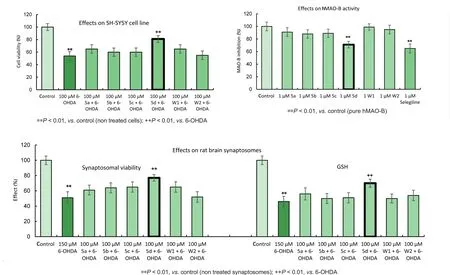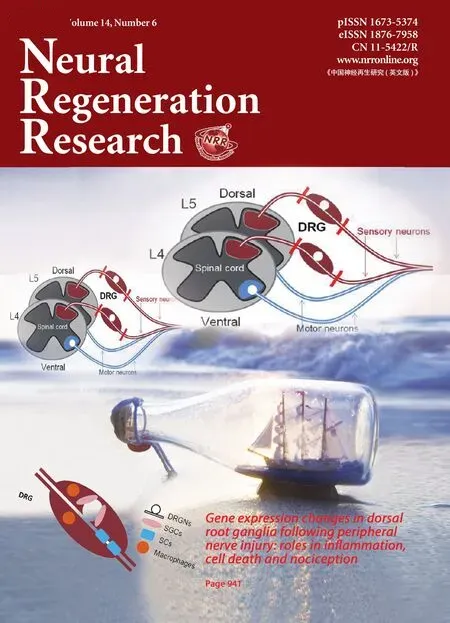Preliminary in vitro evaluation of neuroprotective and monoamine oxidase type B inhibitory effects of newly synthesized 8-aminocaffeines
The expected growth of the elderly population at highest risk for Parkinson's disease (PD) in the next decades makes the identification of factors that promote or prevent the disease an important goal. In addition, new therapies - aiming to delay the progression of PD are also needed (Prediger, 2010). However,there have been few clinical trials designed to investigate neuroprotection. Thus the application of an appropriate in vitro model such as the neuroblastoma SH-SY5Y cell line is extremely helpful. These cells were selected due to its human origin, catecholaminergic neuronal properties, and ease of maintenance(Xicoy et al., 2017).
Some research data on novel treatment approaches suggest the possibility of application of non-dopaminergic therapy in PD treatment including selective adenosine A2Areceptor inhibitors.Recent studies have shown that selective adenosine A2Areceptor inhibitors show neuroprotective properties in Parkinson's pathology, which may be associated with suppression of neuronal in flammation promoted by microglia (Madeira et al., 2017).
In this context recent experimental data have demonstrated caffeine's neuroprotective effects on a variety of neurotoxins,suggesting caffeine and its derivatives to have neuroprotective effects based on their adenosine receptor antagonistic properties, along with some other mechanisms of caffeine-mediated neuroprotection, which are still not precisely determined (Aoyama et al., 2011). Caffeine provided only equivocal borderline improvement in excessive somnolence in PD, but improved objective motor measures. These potential motor benefits guarantee that a larger and long-term trial on caffeine effects will be conducted soon (Postuma et al., 2012).
Results from case-control studies performed in 2001 and prospective investigations of caffeine consumption and risk of Parkinson's disease in men and women revealed a possible protective effect of moderate doses of caffeine on the risk of Parkinson's disease (Ascherio et al., 2001). Additionally, some published data have indicated that higher coffee and caffeine intake correlates with a significantly lower incidence of PD. Another study has found that the effect appears to be independent of smoking, and that the mechanism is related to caffeine intake and not to other nutrients contained in coffee (Ross et al., 2000). The mechanism of the followed-up pharmacological properties of caffeine might be also associated with modulation of neurotransmitter and receptor systems of brainstem pigmented nuclei or striatum.Furthermore, reports indicate that instead of having a direct biological effect on the pathogenesis of PD, coffee and other caffeine sources may be a type of self-medication that decreases clinical expression of Parkinsonism by increasing central dopaminergic tone. Despite that the available results from clinical trials do not consistently support this, the possibility that caffeine has a protective effect against PD, should be investigated further with perspective epidemiological, clinical, and basic scientific approaches(Ross et al., 2000).
Recent publications provide information on some C-8-substituted caffeine derivatives exhibiting dual-target mechanism of action, i.e., adenosine receptor antagonism and inhibition of the enzyme monoamine oxidase type B (MAO-B) (Petzer et al.,2009). These data drew our attention to the search for new xanthine molecules with possible complex neuroprotective properties.
The aim of this article is to present the synthesis of 6 new 8-aminocaffeine derivatives and their neuroprotective properties and MAO-B inhibitory activity in vitro.
The synthesis of the evaluated compounds 5a-f was performed following the path of obtaining the initial amino alcohol, which further interacts with appropriate substituted arylpiperazine,leading to formation of the final products. The synthetic approach is presented on the synthetic scheme below (Figure 1):

Figure 1 General procedure for synthesis of compounds 5a-f.
The relevant data on the methodology of the synthesis and the corresponding verification of the chemical structures are available in the Additional file 1.
The evaluation of the neuroprotective effects of the obtained compounds 5a-f was based on the convenient in vitro model resembling the neurodegenerative processes occurring in PD and based on treatment of neuroblastoma cell line SH-SY5Y and isolated rat brain synaptosomes with 6-hydroxydopamine(6-OHDA). The experiments revealed that in conditions of 6-OHDA-induced neurotoxicity in SH-SY5Y cells and brain synaptosomes [prepared by multiple, subcellular fractionation using a Percoll gradient (Taupin et al., 1994)], only compound 5d revealed statistically significant good neuroprotection. It preserved the cell viability (Mosmann, 1983) by 50% (P < 0.01); synaptosomal viability (Mungarro-Menchaca et al., 2002) by 51% (P < 0.01)and level of reduced glutathione (Robyt et al., 1971) by 52% (P< 0.01), compared to 6-OHDA (Figure 2).
Dopamine metabolism and oxidation, catalyzed by MAO-B lead to formation of reactive oxygen species and reactive quinones, which induce dopamine neurotoxicity and neurodegeneration (Stokes et al., 2002).
On recombinant human MAO-B enzyme, again only 5d showed statistically significant inhibitory activity (decreased enzyme activity by 29% (P < 0.01)), similar to those of Selegiline(decreased by 35% (P < 0.01)) (Figure 2). The activity assay was performed using a fluorometric method by AmplexUltraRed reagent (Bautista-Aguilera et al., 2014).
This neuroprotection of 5 days on SH-SY5Y cell line and brain synaptosomes, in conditions of 6-OHDA-induced neurotoxicity might be due to the inhibition of MAO-B, responsible for the formation of toxic reactive oxygen species and quinolones from dopamine
Magdalena Kondeva-Burdina*, Maya Georgieva,Alexandra Kasabova-Angelova, Virginia Tzankova,Alexander Zlatkov
Laboratory of Drug Metabolism and Drug Toxicity, Department of Pharmacology, Pharmacotherapy and Toxicology, Faculty of Pharmacy, Medical University of So fia, So fia, Bulgaria(Kondeva-Burdina M, Kasabova-Angelova A, Tzankova V)Department of Pharmaceutical Chemistry, Faculty of Pharmacy,Medical University of So fia, So fia, Bulgaria (Georgieva M, Zlatkov A)
*Correspondence to:Magdalena Kondeva-Burdina, PhD,magdalenakondeva@gmail.com.

Figure 2 Effects of the derivatives on hMAO-B enzyme, rat brain synaptosomes and neuroblastoma cell line SH-SY5Y.
Received:October 31, 2018
Accepted:December 11, 2018
doi:10.4103/1673-5374.250573
Copyright license agreement:The Copyright License Agreement has been signed by all authors before publication.
Plagiarism check:Checked twice by iThenticate.
Peer review:Externally peer reviewed.
Open access statement:This is an open access journal, and articles are distributed under the terms of the Creative Commons Attribution-Non-Commercial-ShareAlike 4.0 License, which allows others to remix, tweak,and build upon the work non-commercially, as long as appropriate credit is given and the new creations are licensed under the identical terms.
Additional file 1:Methodology of the performed synthesis.
C-Editors: Zhao M, Sun Y; T-Editor: Liu XL
- 中国神经再生研究(英文版)的其它文章
- Busting the myth: more good than harm in transgenic cells
- Comparative study of microarray and experimental data on Schwann cells in peripheral nerve degeneration and regeneration: big data analysis
- Lessons from glaucoma: rethinking the fluid-brain barriers in common neurodegenerative disorders
- Characteristics and advantages of adenoassociated virus vector-mediated gene therapy for neurodegenerative diseases
- Gene expression changes in dorsal root ganglia following peripheral nerve injury: roles in in flammation, cell death and nociception
- Nicotinamide adenine dinucleotide phosphate oxidase activation and neuronal death after ischemic stroke

